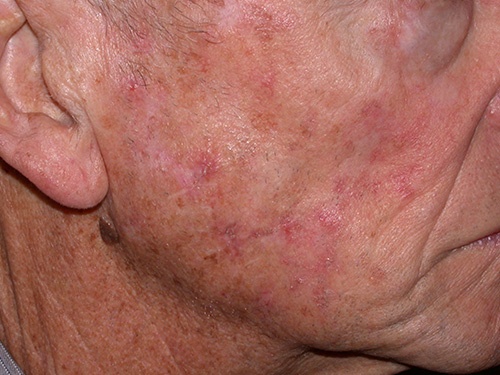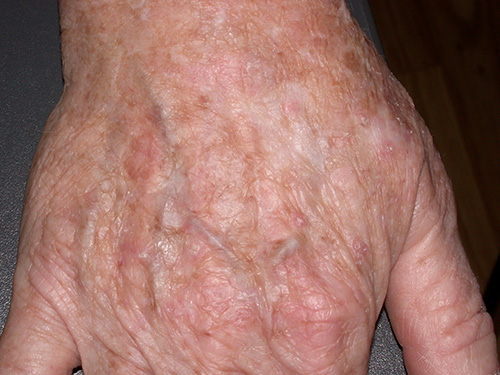Overview of actinic keratoses
Cancer Council Australia Keratinocyte Cancers Guideline Working Party, 2019de Berker, 2017Dodds, 2014
Actinic keratoses (also known as solar keratoses or ‘sunspots’) are erythematous and scaly lesions found on skin in areas usually exposed to sun (eg backs of the hands, forearms, face, scalp in balding people). Lesions range in size from 2 to 20 mm in diameter, and often occur in multiples (known as field change or field cancerisation). Actinic keratoses are usually asymptomatic, but sometimes cause itch, irritation or pain. See here for photos of actinic keratoses.
Actinic keratoses can also be atrophic, hypertrophic, pigmented or lichenoid. They can mimic superficial basal cell carcinomas. Hypertrophic actinic keratoses can mimic squamous cell carcinoma. Occasionally, actinic keratoses develop a cutaneous horn.
Actinic keratoses are due to dysplasia of intraepidermal keratinocytes. The risk of malignant transformation of a single lesion is low. However, large numbers of actinic keratoses indicate solar damage, which is itself a risk factor for skin cancer. Regular skin cancer assessments are advised.


Reproduced with permission from the A-Z of Skin [digital]. Australasian College of Dermatologists. Sydney. https://www.dermcoll.edu.au/
